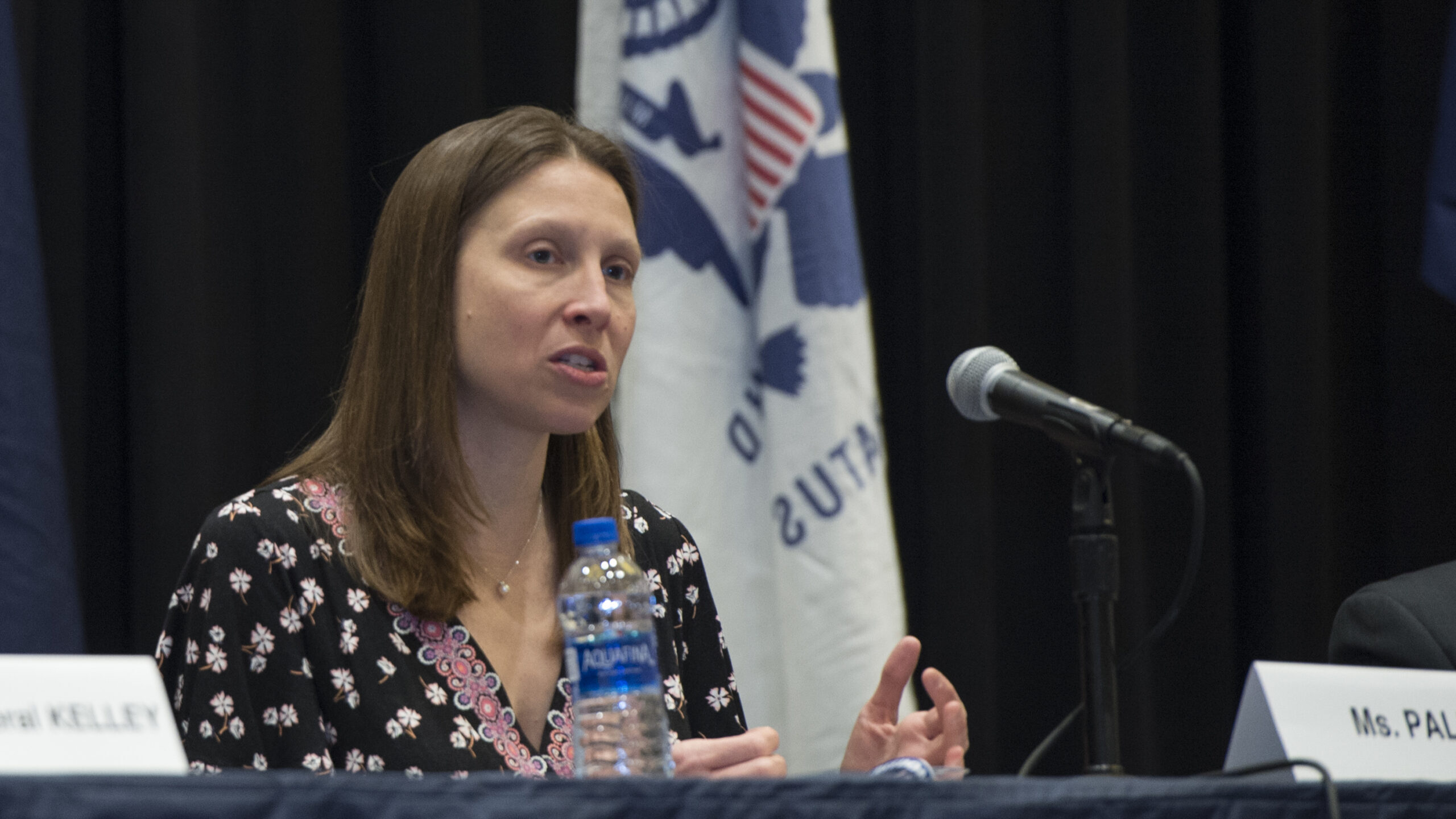
180410-N-EX237-085 NATIONAL HARBOR, Md. (Apr. 10, 2018) Ms. Margaret G. Palmieri, director, Navy Digital Warfare, addresses attendees at the Artificial Intelligence panel during the 2018 Sea-Air-Space Exposition. (US Navy photo by Mass Communication Specialist 2nd Class Lauren K. Jennings/Released)
WASHINGTON — The Pentagon has achieved a “minimum viable capability” for its Joint All Domain Command and Control (JADC2) effort, but budget disputes could delay making it accessible, according to an official from the Chief Digital and Artificial Intelligence Office (CDAO).
Speaking at a Hudson Institute event today, Deputy CDAO Margaret Palmieri said the minimum viable capability was reached through the most recent Global Information Dominance Experiment, GIDE 8, a high-tech exercise centered around data sharing.
Palmieri described the capability as “largely a connection of existing capabilities that we have today that have shared data in new ways and have brought together a combination of new applications [and] new data services with users to create better workflows.” The CDAO will brief DoD leadership in about a week on the experiment.
But in order to make the minimum viable capability accessible, it’s “absolutely critical” the CDAO gets full fiscal year 2024 funding, among other things, she added. Though both the House and Senate have passed the FY24 National Defense Authorization Act, Congress has yet to pass an appropriations bill.
“We doubled, or more, our budget in CDAO from [FY]23 to [FY]24 and don’t have access to that funding right now to make that minimum viable capability truly accessible and robust across the [future years defense program] and so we’re really excited about the potential for an appropriation,” Palmieri said.
Along with funding, “the adoption on the warfighting side and the CONOPS side to now say, okay, what we did in experimentation we can do in the real world everyday” will be important in order to make it accessible, she added.
The Pentagon relaunched the GIDE experiments last February after a year-plus hiatus in an effort to inform its JADC2 progress. The new GIDEs are run by the CDAO with the Joint Chiefs of Staff and are built on the 2021 set of experiments run by NORAD, NORTHCOM and the now defunct Joint AI Center, which was subsumed into the CDAO.
GIDE 9 will align with the Army’s Project Convergence exercise, the service’s contribution to JADC2, Palmieri said. This year’s Project Convergence is set for February 23 to March 20 and will occur in two phases at Camp Pendleton, Calif., and the US Army National Training Center in Ft. Irwin, Calif., according to an Army press release.
“So we’ll align with them in the March timeframe and then for GIDE 10, we will align with [Indo-Pacific Command’s] Valiant Shield effort … and [we are] really excited to align with the … global integration experiment, or GIE, that the Joint Staff runs,” Palmieri said. “So we’re really trying to take GIDE to align with existing activities and start to bring those data connections closer to stuff that people are already doing.”






















